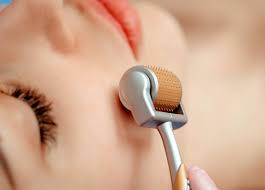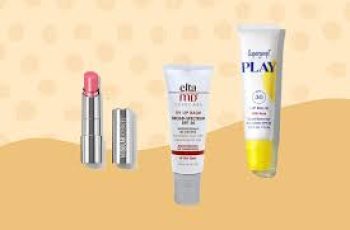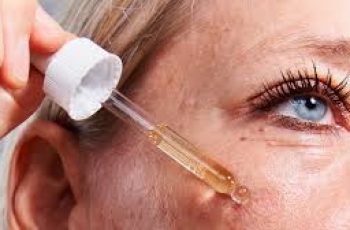Can I use Vitamin C After Microneedling?
When you hear the word microneedling, it may feel a little intimidating and scary, but it is in fact a helpful treatment for the skin that can deliver a lot of benefits. The main benefit being its ability to promote the skin to heal itself which leads to a visible reduction in the appearance of fine lines and wrinkles. It is also able to target other concerns such as uneven skin texture caused from scarring left from acne and other problematic skin conditions.
You may be thinking how this no longer sounds too scary and perhaps wondering how it works, so let’s have a quick lesson on how it delivers results and the benefits you can expect to see.
How Does Microneedling Work on The Skin?
Microneedling is performed with a small pen-like device covered in tiny needles that is rolled over the skin. The needles create small tears on the skin surface that sends signals to the skin to kick start its production of collagen and elastin. The reason this happens is because the skin is tricked into thinking it is damaged and so responds with boosting the growth of new skin cells to promote a brighter, plumper, healthy, younger looking complexion.
Both collagen and elastin are vital for supporting the structure and overall health of the skin. Collagen is found in the lower layers of the skin and is naturally produced keeping the face healthy and youthful. The downside is the production of collagen declines as we age resulting in visible changes in the skin. Fine lines and wrinkles become more noticeable and the skin’s lipid barrier is weakened leading to further damaged from exposure to free radicals, such as UV rays, pollution, and other oxidised stress.
Elastin is also known as the skin’s protein and is responsible for keeping it flexible and stretchy. Once the production of elastin begins to slow down the skin will become saggy making the face appear older than it is.
You can find microneedling is a popular treatment in many salons and spas and must always be performed by a fully trained professional in a safe and sterile environment. There is also the option of purchasing your own at-home device, but this is something that requires a lot of research to ensure you use the treatment properly without the risk of causing further damage to the skin. If you wanted my advice, if you have the budget to seek the help from the professionals, then this is the road you should take.
Considering microneedling is such a beneficial treatment for keeping the skin healthy, you may not be surprised to hear that there are some important factors you must follow regarding your aftercare. Certain actives for example should be avoided completely, and others must be reintroduced into your routine at the optimal time. Today we are going to investigate whether you can use vitamin C after mirconeedling, so stick around as we will answer all your questions now.
Just as a brief sidenote, if you are wondering what vitamin C can do for the skin, check out our blog post which goes into more detail about the benefits this powerhouse has to offer.
Is vitamin C good for microneedling?
Yes and no, what I mean by this is you must only use vitamin C immediately after your microneedling treatment if instructed by your dermatologist. Many skin experts feel that the fact that vitamin C is packed with antioxidant properties will keep skin healthy and speed up the healing process.
I would advise however, to avoid using vitamin C, or any other potent ingredients, such as glycolic acid, salicylic acid, and retinol post microneedling. The way in which the treatment works by leaving small tears on the skin can leave it susceptible to flare-up in irritation and unwanted side effects.
Just remember to ask the professional who performs your treatment whether you are safe to apply vitamin C serum, and this should make things a lot clearer.
What serum should I use after microneedling?
Serums enriched in hyaluronic acid are the number one ingredient to use after microneedling. Due to the moisture-binding properties and several different molecular sizes of HA, it is the one ingredient that will work wonders for the skin and promote the healing process. You will also find that once microneedling is performed on the skin it will help any hyaluronic acid to absorb rapidly and deliver maximum hydrating effects.
You may also find that the skin can begin to feel slightly tight after microneedling so a liberal layer of hyaluronic acid serum will give the skin the hydrated boost it needs, leaving it comfortable and glowing.
Should I use moisturiser after microneedling?
Absolutely! Applying a moisturiser to the skin after microneedling will ensure lipid barrier is strengthened and hydrated. Appling a moisturiser will also form a physical layer on the surface of the skin ensuring it remains fully protected from any oxidised stress caused from exposure to free radicals, such as UV rays, pollution, central heating, and other environmental aggressors.
My one tip would be to remain mindful of the formula and opt for product that is enriched in ingredients such as hyaluronic acid, vitamin E, and other nourishing actives without any additional fragrances as this can cause skin irritation.
What should you not do after microneedling?
Avoid ingredients that act as exfoliants for the skin, such as retinol, AHAs, like glycolic acid and BHAs, such as salicylic acid. These acids are too potent for the skin after microneedling and will cause severe dryness, irritation, redness, and discomfort if applied too soon after the treatment whilst the skin is still healing.
You’ll find the skin will appear swollen with signs of redness for at least 48 hours after your treatment, this is perfectly normal and will settle down shortly after those days. Here are a few more examples of aftercare which if followed correctly will promote a healthy, repaired, glowing complexion.
Ensure you apply a daily SPF on a regular basis during the first two weeks after your treatment. This will protect the skin and ensure no further damage is caused from exposure to skin aggressors.
Avoid touching your face as much as possible as the bacteria on your hands can cause infection.
Do not apply any makeup and avoid using makeup brushes for the first 24 hours after mirconeedling.
Ensure you stay away from swimming pools, saunas, and heavy exercise that can lead to excessive sweating.
These should be followed for a minimum of 72 hours combined with liberal application of hyaluronic acid serums to keep the skin hydrated and comfortable.
So, there you have it, I hope that is has been of some use today. If you have any further questions do come, and find us on Instagram, we look forward to seeing you there!
DQH Knowledge drop: In your 20s, your skin cell turnover decreases. (Cell turnover is a key component in keeping your skin youthful.) You know what else slows down? Your collagen production. Starting in your 20s, collagen decreases by about 1 percent per year. Should you want to prevent fine lines and wrinkles, start by eliminating behaviors that contribute to premature aging. “If it’s bad for you, it’s bad for your skin,” says dermatologist Michel Somenek.
“Cigarette smoking reduces blood flow to the skin and causes premature wrinkling and a dull skin texture. Making the repeated pursed motion to inhale can also cause smoker’s lines. Alcohol and recreational drugs are toxins for the skin that damage its cellular structure and DNA,” Somenek tells us. “The faster you eliminate vices while you are young, the better chance your skin and body have to recuperate.” Also, adopting an anti-aging routine in your 20s is key. After all, the best offense is a good defense. We spoke to Somenek and experts Joshua Ross and Audrey Kunin to find out more.
Keep reading for the best anti-aging products for your 20s, according to skincare professionals.
Sunscreen
“We all know that the sun is the number one cause of skin aging and starting the prevention in your 20s is very important,” Ross says. “The majority of your sun damage won’t start to appear until you’re in your 30s, so don’t wait until you see it surface or you’ll be behind the curve. Stay ahead of it with a good-quality zinc-based sunscreen worn daily.”
Farmacy Green Defense Daily Mineral Sunscreen
An invisible sunscreen with SPF 30, plus botanical extracts meant to protect skin with tons of antioxidants. Bonus: It’s clean and fine to use under makeup.
Bareminerals Complexion Rescue™ Tinted Moisturizer Broad Spectrum SPF 30
Although we recommend you use your SPF and moisturizer separately, we also understand moments when you don’t have time or energy for that extra step. For those times, this bareMinerals moisturizer is a great thing to have on hand.
Vitamin C Serum
“A great introduction to anti-aging is to start with a vitamin C serum in your morning skincare routine,” Ross says. “It’s a powerful antioxidant that will neutralize free radicals and brighten the skin.” He adds that it’s a great way to counteract the effects of the sun’s harmful rays, which, as previously mentioned, are among the biggest causes of premature aging.
Drunk Elephant C-Firma™ Vitamin C Day Serum
The Drunk Elephant C-Firma is a lightweight serum that promises to give skin a glow by combining the brightening powers of vitamin C with ferulic acid, l-ascorbic acid, and vitamin E. The included sodium hyaluronate is meant to replace hydration loss, so you shouldn’t have to deal with any irritation.
Sunday Riley C.E.O. Rapid Flash Brightening Serum
This potent serum is jam-packed with vitamin C (15 percent, to be exact), which means it’s a potential superstar at both brightening skin and dousing it in antioxidants.
Peptides
Using peptides on your skin has many benefits, says Somenek. “The skin barrier is what defends the body against pollution, UV rays, bacteria, and toxins. It can be damaged by several everyday factors. Using topical peptides aids in building a stronger barrier,” he says. “Peptides comprise elastic fibers, which are a type of protein. These fibers help to make skin appear taut and firm. Peptides can also help repair damaged skin, relieve inflammation, and even out skin tone. Some peptides can kill acne-causing bacteria that is common in 20-somethings.”
Kunin agrees, saying, “Peptides are an excellent entry point for supporting collagen.” She recommends looking for face and eye treatments that contain these collagen-boosting powerhouses.
Charlotte Tilbury Magic Eye Rescue Cream
This Charlotte Tilbury super-emollient eye cream has a base of coconut oil and shea butter (read: it’s incredibly hydrating). Botanicals plus peptides are meant to help reduce dark circles and boost collagen, respectively.
This creamy moisturizer serves up potent collagen-boosting peptides and pycnogenol, and antioxidant-rich vitamin C. “Instead of sitting on top of the skin, peptides penetrate the outer layer so they go deep. The ‘signals’ they send tell the cells to produce elastin and collagen, which are needed for youthful-looking skin,” explains Somenek.
At-Home Peel Pads
Remember that skin cell turnover fiasco we talked about earlier? One way to help support it is by exfoliating. “Exfoliation is important to help keep skin fresh and luminous,” Kunin says. She recommends using at-home peel pads as an easy and effective way to exfoliate.
“The goal in your 20s is to fight the slowing pace of cell turnover. It is wise to use products that gently exfoliate, yet still remove oil and other impurities. Products that have Alpha Hydroxy Acids (AHA) or Beta Hydroxy Acids (BHA) are a good choice.”
According to Somenek, you should only exfoliate two to three times a week. “People of all ages are guilty of over-exfoliating and that can be too much of a good thing,” he says.
Dermadoctor Kakadu C Intensive Vitamin C Peel Pad
A few swipes of this Derma Doctor powerful peel pad promise to leave your skin glowing and smooth, thanks to the seven (yes, seven) types of chemical exfoliants, including AHA and BHA. It also contains vitamin C via Kakadu plum extract for added brightening and antioxidant protection.
KEY INGREDIENTS Kakadu plum extract is sourced from the Kakadu plum, a fruit grown in northern Australia. It contains vitamin C, which restores the skin’s natural barrier, increases collagen production, and soothes irritation.
Dr. Dennis Gross Skincare Alpha Beta® Universal Daily Peel Pads
These are the gold standard of peel pads, with a cult following and over 900 five-star reviews on Sephora. They’re easy to use and contain a blend of anti-aging exfoliating acids.
Emollient Night Cream
“In your 20s, you need to start upping the hydration in your skincare routine. You may have been cautious of over-moisturizing because of acne in your teens, but as you enter your 20s, your skin transitions and becomes drier,” Ross says. “I recommend an emollient night cream added into your evening skincare regimen.”
“Twenty-somethings need to make sure that they are not using creams that will clog their pores and cause excess oil production,” says Somenek. Opt for non-comedogenic products.
Cerave Skin Renewing Night Cream
One great choice is the CeraVe Skin Renewing Night Cream, which is a non-comedogenic night cream that leaves skin soft and glowy. It combines the moisturizing powers of ceramides and hyaluronic acid.
RoC Retinol Correxion Max Hydration Creme
“The best night cream ingredients contain retinol, benzoyl peroxide, and/or salicylic acid or hyaluronic acid. The goal is to moisturize, yet remove excess oil,” says Somenek. This Roc Retinol Correxion cream fits the bill as it contains both hyaluronic acid and retinol so it promises to moisturize while also being non-comedogenic.



